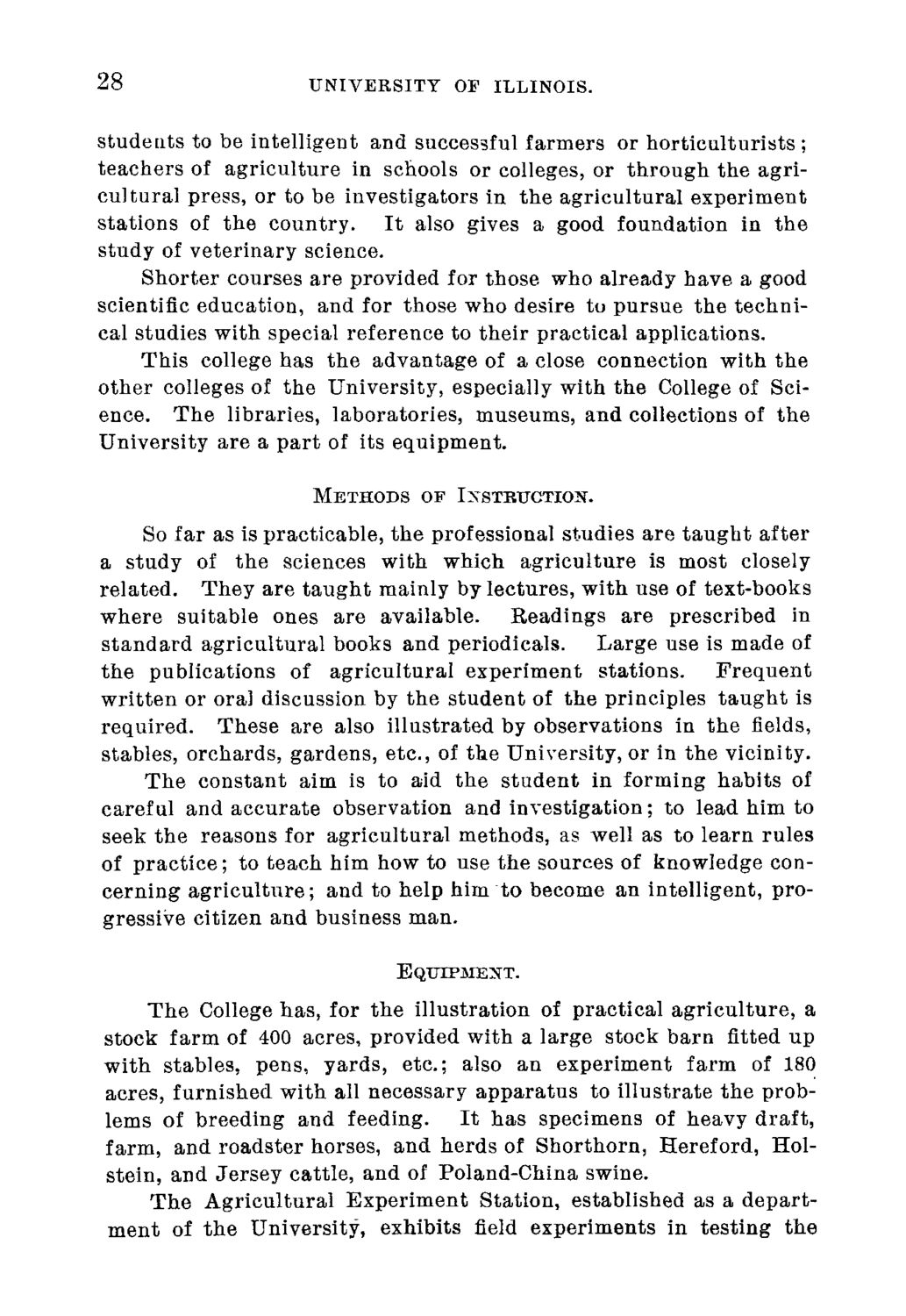| |
| |
Caption: Course Catalog - 1891-1892
This is a reduced-resolution page image for fast online browsing.

EXTRACTED TEXT FROM PAGE:
28 UNIVERSITY OF ILLINOIS. students to be intelligent and successful farmers or horticulturists ; teachers of agriculture in schools or colleges, or through the agricultural press, or to be investigators in the agricultural experiment stations of the country. It also gives a good foundation in the study of veterinary science. Shorter courses are provided for those who already have a good scientific education, and for those who desire to pursue the technical studies with special reference to their practical applications. This college has the advantage of a close connection with the other colleges of the University, especially with the College of Science. The libraries, laboratories, museums, and collections of the University are a part of its equipment. METHODS OF IXSTBUCTION. So far as is practicable, the professional studies are taught after a study of the sciences with which agriculture is most closely related. They are taught mainly by lectures, with use of text-books where suitable ones are available. Readings are prescribed in standard agricultural books and periodicals. Large use is made of the publications of agricultural experiment stations. Frequent written or oral discussion by the student of the principles taught is required. These are also illustrated by observations in the fields, stables, orchards, gardens, etc., of the University, or in the vicinity. The constant aim is to aid the student in forming habits of careful and accurate observation and investigation; to lead him to seek the reasons for agricultural methods, as well as to learn rules of practice; to teach him how to use the sources of knowledge concerning agriculture; and to help him to become an intelligent, progressive citizen and business man. EQUIPMENT. The College has, for the illustration of practical agriculture, a stock farm of 400 acres, provided with a large stock barn fitted up with stables, pens, yards, etc.; also an experiment farm of 180 acres, furnished with all necessary apparatus to illustrate the problems of breeding and feeding. It has specimens of heavy draft, farm, and roadster horses, and herds of Shorthorn, Hereford, Holstein, and Jersey cattle, and of Poland-China swine. The Agricultural Experiment Station, established as a department of the University, exhibits field experiments in testing the
| |